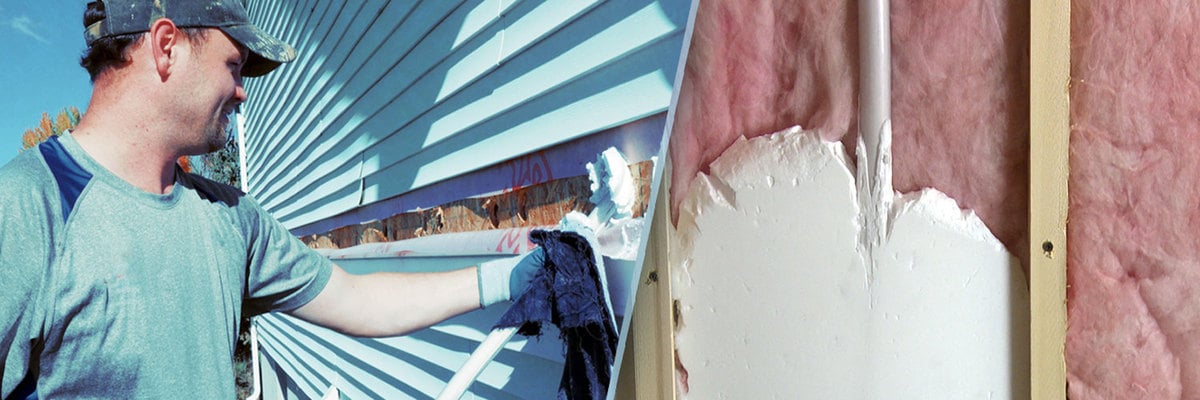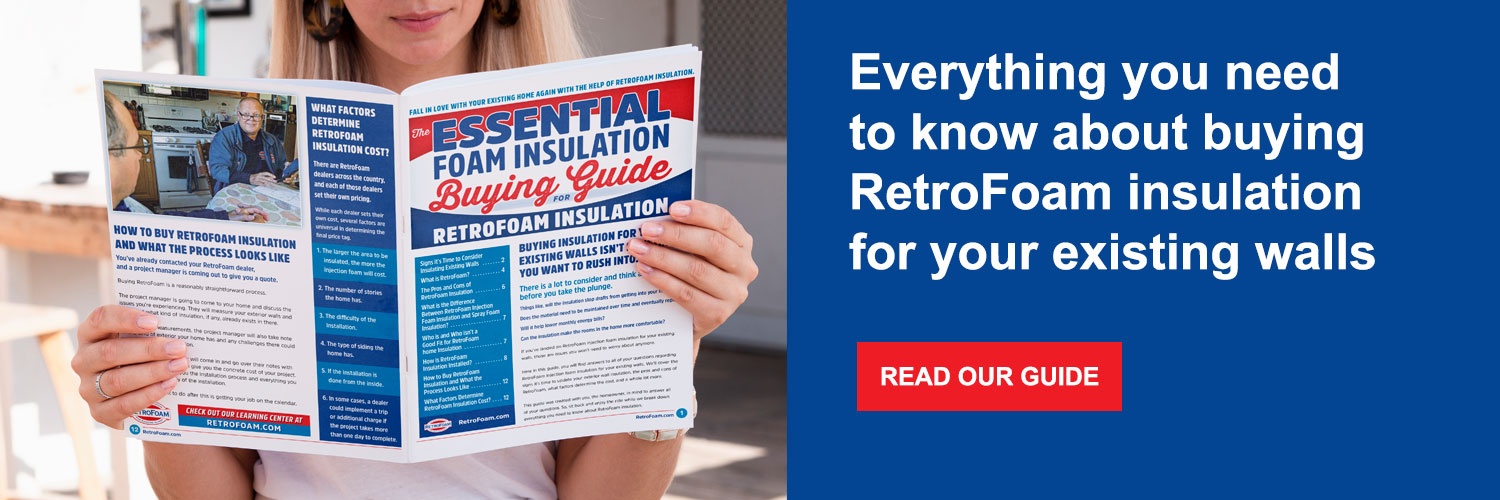Can You Add RetroFoam to a Wall with Old Insulation?


Can You Add RetroFoam to a Wall with Old Insulation? (Quick Answer)
Yes, you can add RetroFoam to a wall with existing insulation, depending on what material is in there. In the case of fiberglass, the foam can be added without any need to remove it because the RetroFoam actually compresses it. If there is blown-in cellulose, in some cases it needs to be removed before the foam could be injected depending on how much is in the wall.
Now let’s talk more about how RetroFoam is installed in walls with existing insulation.
You’ve decided RetroFoam is the best option for your exterior walls, but what’s going to happen to the old insulation already in there?
Is removing the old cavity wall insulation required? If the old insulation stays in place, what happens to it?
RetroFoam has been providing premium injection foam insulation for existing walls for more than 35 years. Our expertise tells us which materials can stay in the wall, and which ones will need to be removed.
The type of existing insulation in your walls will determine the next steps the RetroFoam installer will take. Here’s what you can expect depending on whether fiberglass, blown-in cellulose, or glued in cellulose is in your walls.
How to Tell if There is Insulation in the Wall
Before you add RetroFoam to your walls, it’s good to know what you currently have for insulation.
There are a few ways to do this without the need to tear out your drywall.
- You can ask the previous homeowners what kind of insulation is in the walls.
- Drilling a small hole someplace inconspicuous can give you a look inside the wall.
- Pulling off one of your baseboards is another way to get a look at your wall insulation.
- You can also remove an outlet or light switch cover to see what kind of insulation is in the wall, but make sure you shut off the circuit running to the boxes first.
Adding Injection Foam Insulation to Existing Walls with Old Insulation
The type of insulation in your walls will determine whether it needs to be removed or not.
Fiberglass and cellulose perform and age differently over time, so how they are handled in the injection foam insulation installation is different.
If there is fiberglass insulation in the wall cavity, there is no need to remove it. This is because the RetroFoam will compact the old fiberglass as it is injected into the wall cavity. The old fiberglass doesn’t impede the injection foam from filling every inch of the cavity.
If there is blown-in cellulose in the walls, then that material can actually keep the RetroFoam from filling the wall cavity like it is designed to do. In some instances, the blown-in cellulose would need to be removed but would need to be assessed on a case-by-case basis. If there isn't a lot of cellulose in the wall, then the removal can be skipped.
In the case the cellulose needs to be removed, the installer would remove a row of siding from around the bottom of your home and drill a hole into each cavity. They would then use a vacuum to suck out the cellulose.
Now, if your walls have glued-in cellulose, there is no way to remove it. In this case, it wouldn’t be possible to install the injection foam.
RetroFoam Insulation for Your Exterior Walls
The RetroFoam dealer in your area will take a look inside your walls and discuss with you what you have in there if you don’t already know.
RetroFoam installers are trained and experienced in getting the job done whether your walls have fiberglass or blown-in cellulose.
If you have more questions about RetroFoam insulation, how it’s installed, or how it works, check out the Learning Center on our website.
Related Articles
How to Tell if There is Insulation in the Wall
What are the Best Exterior Wall Insulation Options?
What is the Best Type of Insulation for Insulating Existing Walls?
About Amanda Emery
Amanda previously has worked as a breaking news and crime reporter, TV news producer, and editor. As a journalist, she has won several awards from The Society of Professional Journalists - Detroit Chapter and the Michigan Press Association. Amanda uses her experience as a journalist to write content that will help educate homeowners on foam insulation benefits. When Amanda isn’t writing, she’s spending time with her husband Chris, daughter Lilith-Maeve, and rescued huskies Danger and Wendigo. She also loves knitting, making art, and cooking.


